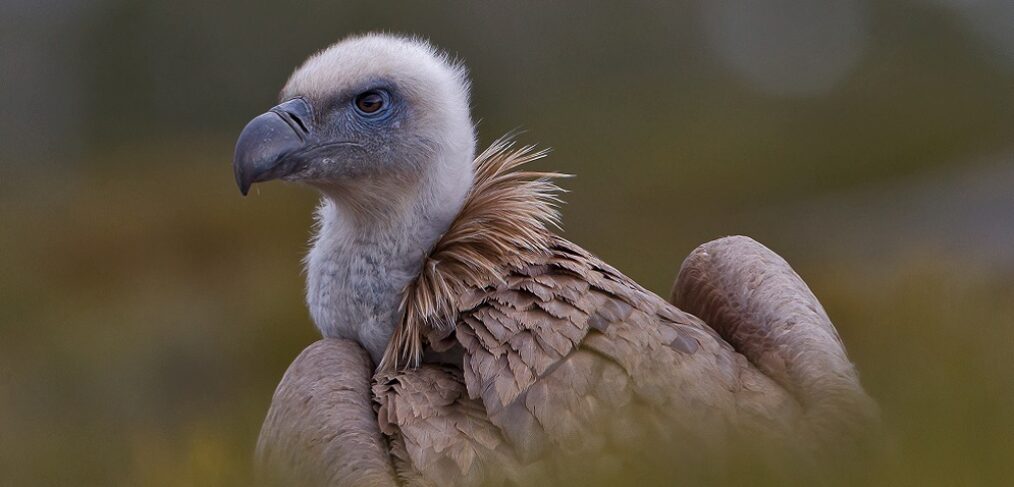
species of the week #55 – griffon vulture
In 2014, a griffon vulture was observed for several days in the Grünstadt area. With a wingspan of up to 2.70 m, griffon vultures are significantly larger than buzzards and therefore very conspicuous. Only eagles are almost as large, but show a completely different flight pattern.
Griffon vultures are nest feeders and are cared for by their parents for four months. The young birds are easily recognisable by their colour. Only in their fourth to fifth year are griffon vultures fully coloured and their beaks are then white. Their light collar feathers and short tail feathers are unmistakable.
| Distribution status | Extinct in Rhineland-Palatinate |
| Remaining deposits | southern France, Pyrenees, Croatia |
| Last sighting in rhineland-palatinate | 2014 near Weisenheim am Sand |
| Habitat | Steppes and semi-deserts with rock faces, especially in mountainous areas or on steep coasts |
| Threat | Hunting, lack of food |
Griffon vultures breed high up on cliffs where they cannot be reached by prey predators or humans. Due to the prevailing thermal conditions, the adult birds can get their relatively heavy bodies into the air in these places in a particularly energy-saving way. On the rock faces, updrafts quickly lift the vultures to great heights, and the birds can soar far over the landscape without flapping their wings. Because vultures are specialised in this soaring flight – their very broad wings are perfectly adapted to it – they need take-off sites with updrafts and have specialised in the rocks as nesting sites not least for this reason.
Colour-wise, the birds are excellently adapted to their surroundings. They rarely move, so you usually don’t even see them when you are standing directly in front of the rock face where they are nesting.
Griffon vultures are scavengers, so they make sure that dead animals do not cause disease. It has never been observed that griffon vultures prey on live animals.
In earlier times, the natural range of griffon vultures extended over almost the whole of Central and Southern Europe. In Germany, there were breeding sites along the Rhine. Griffon vultures and their close relatives, the bearded vultures, were primarily resident in the Bavarian part of the Alps until about 1890. However, at the insistence of cattle owners and herders, the birds were released for shooting after a government decree and completely exterminated within a fairly short period of time.
Why the griffon vultures are spreading further and further into Central Europe – several flocks, presumably originally from Spain, have already been sighted in Germany – is unclear. Whether this is a result of climate change or predatory competition for nests, or both, there is still no scientific consensus. However, no new griffon vultures have settled permanently.
However, with growing populations in South Asia, the griffon vulture may soon be removed from the global Red List.
Politically necessary:
- Continued discourse on prey predators and grazing livestock
For the previous species of the week click here
Image: By Juan Lacruz – Own work, CC BY-SA 3.0, https://commons.wikimedia.org/w/index.php?curid=24276338
